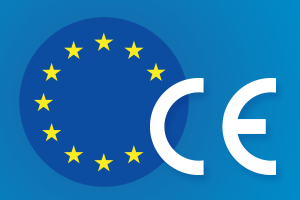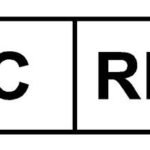Table of Contents
What is EU-MDR compliance?
The European Medical Device Regulation (MDR) is a set of regulations that governs the production and distribution of medical devices in Europe, and compliance with the regulation is mandatory for medical device companies that want to sell their products in the European Union (EU) region.
This set of law is also term as EU Medical Device Regulation 2017/747 or EU MDR in short.
The Medical Devices Regulation (EU 2017/745) has replaced the Medical Devices Directive (93/42/EEC) as the legislation detailing the requirements that manufacturers must meet to place medical devices on the market in the European Union. Previously approvals are largely issued by 3rd parties call Notified Bodies in a for of a CE certification. However, based on MDR, the manufacturers need to also register the device in portal call EUDAMED.
Authority for Medical Device
As per this link: md_contact_points_of_national_authorities.pdf (europa.eu)
You can visit this link for a live update. Competent Authorities – EUDAMED (europa.eu)
Medical Device Definition
Medical device means any instrument, apparatus, appliance, software, implant, reagent, material or other article intended by the manufacturer to be used, alone or in combination, for human beings for one or more of the following specific medical purposes: — diagnosis, prevention, monitoring, prediction, prognosis, treatment or alleviation of disease, — diagnosis, monitoring, treatment, alleviation of, or compensation for, an injury or disability, — investigation, replacement or modification of the anatomy or of a physiological or pathological process or state, — providing information by means of in vitro examination of specimens derived from the human body, including organ, blood and tissue donations, and which does not achieve its principal intended action by pharmacological, immunological or metabolic means, in or on the human body, but which may be assisted in its function by such means. The following products shall also be deemed to be medical devices: — devices for the control or support of conception; — products specifically intended for the cleaning, disinfection or sterilisation of devices as referred to in Article 1(4) and of those referred to in the first paragraph of this point.
Download a free copy of EU MDR here: REGULATION (EU) 2017/ 745 OF THE EUROPEAN PARLIAMENT AND OF THE COUNCIL – of 5 April 2017 – on medical devices, amending Directive 2001/ 83/ EC, Regulation (EC) No 178/ 2002 and Regulation (EC) No 1223/ 2009 and repealing Council Directives 90/ 385/ EEC and 93/ 42/ EEC (europa.eu)
Medical Device Classification
Classification is done as per Annex VIII in EU MDR and there are 4 main classifications based on risk assessment:
- Class I, Class I sterile, class I measuring, class I reusable
- Class IIa
- Class IIb
- Class III
Medical Device Registration Pathways
Step by Step for EU Medical Device Regulations compliance
1) The first thing you need is to get a qualified PRRC (person responsible for regulatory compliance). Usually, it is the same person as the management representative as defined by ISO 13485. However, this can be sub-contracted to a qualified consultant. Follow to MDCG documents as per link here on guidance of implementation for EU MDR. This can be downloaded here: Guidance – MDCG endorsed documents and other guidance (europa.eu)
2) Next you need to classify your device in accordance to Annex VIII of Medical Device Regulation (MDR). You can get the latest copy from the European commission website link above.
3) Developed a Quality Management System (QMS) according to ISO 13485. If you are class I self-certified product, there is no need to get audited by a Certification Body (Such as TUV, BSI, SGS etc). The reason why you want to develop a QMS first before doing up technical documentation is because you can start documenting your specifications, design inputs, outputs in an orderly and official manner. This is to prevent the need to do retrospective documentation after the design of your product is completed.
4) Developed the technical file according to Annex II and III of MDR. You can visit here to see how can do the General Safety and Performance Requirements. The format is slightly different from the Essential Requirement checklist from the old MDD. Visit here for layman explanation on the requirement for technical fie. Visit here to see the mistakes to avoid when drafting the clinical evaluation report (CE). Please note CER is not that simple to pass CE requirements anymore under MDR and Meddev 2.7.1 Rev 4. Even experience regulatory personnel may need to seek experienced clinical writers to review or draft the CER for the manufacturer. Click here to see other mistakes to avoid when transiting from MDD to MDR.
Also remember to get your Unique Device Identifier (UDI) from organization like GS1. See here to see UDI implementation timeline. Also, you would need to select your conformity assessment route. Most companies would choose Annex IX as the default. Again, this is not needed for Class I self-certified product.
5) Draft the EU DOC (Declaration of Conformity) before the external audit. This is needed because the EC REP or Notified Body usually wants to see how you draft the EC DOC. Click here to see an example.
6) Appoint an EC REP/ EU Authorised Representative if the manufacturer does not reside in EU.
7) Get audited by Notified Body. If you are class I self-certified product, there is no need to get audited by a Notified Body (Such as TUV, BSI, SGS etc). Usually for the first time, manufacturers get ISO 13485 certificate before getting CE certification. However, some manufacturers prefer to get both at the same time. For annual surveillance audit, manufacturers prefer to use one service provider to do the external audit to prevent multiple audits in one year.
8) So now you have the UDI, CE Cert and EC REP, the Manufacturer can now do medical device registration via EUDAMED via this link: MDR-Eudamed – Welcome to EUDAMED (europa.eu)!
Actor registration guidance can be found here: https://health.ec.europa.eu/medical-devices-eudamed/actor-registration-module_en
UDI Device registration guidance can be found here: https://health.ec.europa.eu/medical-devices-eudamed/udidevices-registration_en After this step you can now launch your product in EU and claim that your Medical Device has CE Marking!
Document requirements
- EU DOC with UDI-DI
- Risk Management Plan
- Risk Management File
- Risk Management Report
- Clinical Evaluation Plan
- Clinical Evaluation Report
- Clinical Investigation Documents
- Device Description and Specification
- Labels and Instruction for Use
- Design information (can be reference to QMS)
- Manufacturing process and validations
- Identification of sites (including OEM)
- Results of preclinical testing
- PMS Plan
- PMS Report or PSUR
- PMCF
Quality Management System
Comply to latest version of EN ISO 13485
License Transfer
Not applicable
Fees
There is no fee for EUDAMED registration but there are a lot of cost associated with Quality Management System and Technical Documentations setup.
Timeline
Approval in EUDAMED depends on the efficiency of the respective EU authorities and can take as fast as few weeks to more than 1 month.
Technical documentations may require more than 1 year of effort depending on the complexities of the device and the resource from the manufacturer
Advantage for choosing an independent authorized representative
Appointment of EC REP/ EU Authorised Representative is mandatory as per EU MDR if the manufacturer is not located in EU. However, choosing a qualified and experience authorised representative is very important to ensure compliance to the law. Hence choosing your distributor or EU subsidiary for this function is NOT recommended.
Public Database for Medical Device
EUDAMED link here: https://ec.europa.eu/tools/eudamed/#/screen/home
Contact Us
Email us: cmsmedtech@compliancems.com.au




Pingback: EU Authorised Representative | CMS MedTech